Across England’s top two divisions, Arsenal and Leeds United could both claim to have suffered the most heartbreaking end to a largely successful 2023/24.
Arsenal took their title challenge to the final day of the season, but they were unable to pip Man City to the crown which has eluded them for 20 years.
In the EFL Championship, Leeds battled intensely all season in one of the most competitive Championship promotion races of all time.
At points last season, Leeds were clearly in the driving seat to return to the Premier League.
However, they suffered defeat in the playoff final, losing 1-0 to Southampton, condemning Leeds to another year outside of the top-flight.
Both teams have had very contrasting summers.
Arsenal have bolstered their squad, adding the quality of Raheem Sterling, Riccardo Calafiori and Mikel Merino to the squad.
Leeds spent the window losing their most prized talents, seeing Archie Gray, Georginio Rutter, and Championship Player of the Year Cryscencio Summerville leave for clubs in the Premier League.
Both teams’ summer business reflects the starts each side has made.
Arsenal are currently unbeaten in the league as they look to keep pace with Man City again.
Leeds have had a mixed start, losing one, drawing two and winning three.
Yet, could each side’s quest to right the wrongs of last season be found in one important factor?
Leeds United have failed to score a goal from their last 151 corner kicks.
This is vastly different from Arsenal, who scored 20 goals from set pieces last season, more than any other side.
This set piece analysis will analyse Leeds’ failings from corners and the detrimental impact it could have on them securing promotion.
Likewise, it will highlight what Arsenal have done contrastingly well as they seek to utilise set pieces to finally get their hands on the Premier League title.
Why Are Corners So Important?
Long gone are the days where set-piece success is deemed as only a strength of teams with perceived lower technical ability.
The Tony Pulis era, when he used tactics such as throw-in routines and played four centre-backs in his backline, was often scoffed at.
These are now some of the hallmarks of the world’s elite sides.
The numbers show how valuable set pieces are.
Since the start of last season, Arsenal, Manchester City, and Liverpool have all been in the top five for most goals scored from set pieces, demonstrating how the top sides in England have used set pieces to help them reach the summit of the Premier League.
Goals from corners have also been increasing in the English top flight.
Prior to the 2023/24 season, goals from corners had significantly increased over several campaigns.
In the 2022/23 season, 151 goals were scored from corners, an increase of 19 goals from the 2020/21 season.
Teams are also becoming more efficient, with 3.94 goals being averaged every 100 corners in the 2022/23 season.
This proficiency has come after a steady climb from 3.3 in the 2019/20 season.
This rise isn’t a surprise, considering the investment that top-level teams have put into their technical staff over the past years to gain an advantage on set pieces.
Set-piece coaches such as Nicolas Jover (Arsenal) and Austin MacPhee (Aston Villa) have become some of the most recognisable members of a head coach’s backroom staff.
More and more clubs are also employing a specific set-piece analyst.
So what led to Arsenal scoring a Premier League joint record of 16 goals from corners last season, and what has prevented Leeds from turning their corners into vital goals?
Let’s get into the analysis.
All In The Delivery
Leeds have mixed up their approach to corners in the hope of finding a solution to their troubles at set-pieces.
This season, Leeds have switched between inswinging and outswinging deliveries, taking 16 inswinging corners and 17 outswingers.
This is an excellent contrast to Arsenal, who delivered just one outswinging corner out of a total of 217 in the 2023/24 Premier League season.
Stats show that inswinging deliveries are more effective.
Some academic studies have even found that 80% of corner kick goals come from inswinging deliveries across a league campaign.
Arsenal are fortunate to possess players such as Bakayo Saka and Declan Rice, who provide the balance of having a left-footed and a right-footed player to deliver inswinging corners on both sides.
Leeds have had to rely on left-footed Ilia Gruev to take the majority of the corners, delivering 23 of Leeds’ 33.
Daniel Farke hasn’t entrusted players such as Joe Rothwell, Daniel James, and Brendan Aaronson with consistently taking corners.
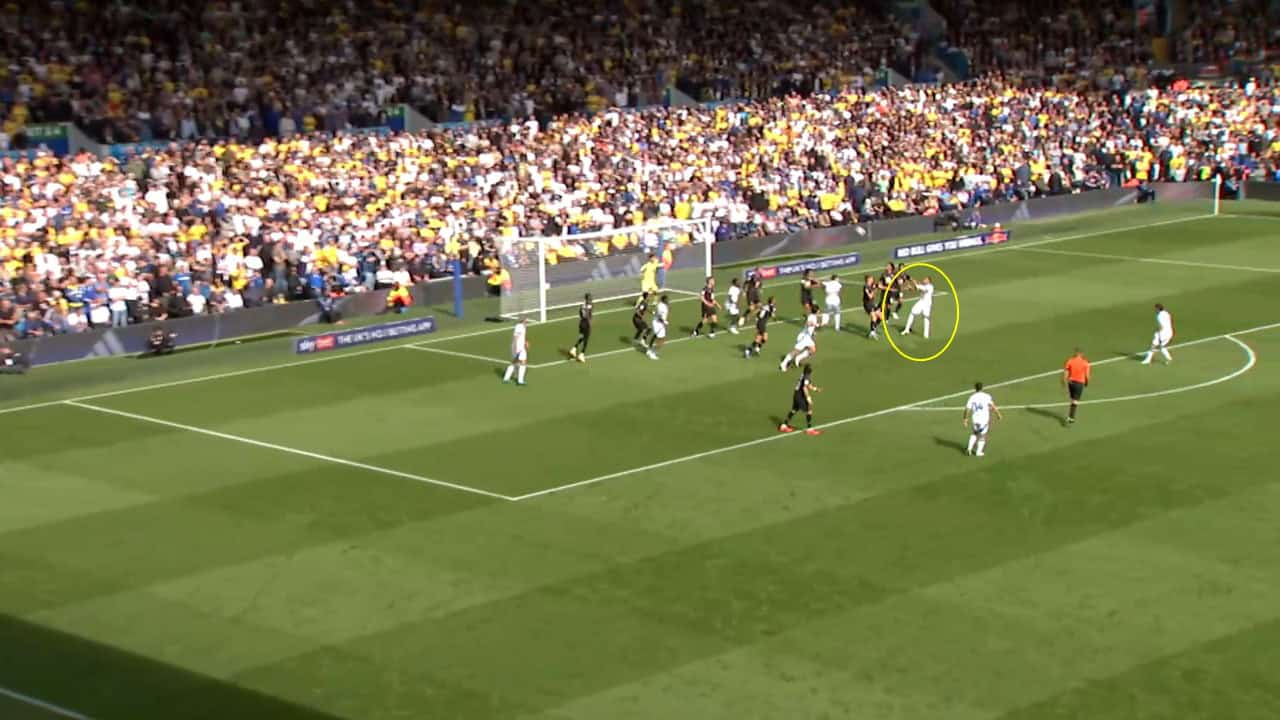
In this situation, Leeds have delivered an outswinging corner which has reached the head of Matteo Joseph.
The delivery on the ball lacks pace and has gone considerably high in the air.
This leads to the opposition defenders getting out to Joseph and blocking what was a weak header.
The area where the ball is delivered is also vitally important.
It’s been discovered that the most effective areas for players to aim for are either the front post or the six-yard box.
This has been a vital component of Arsenal’s routines.
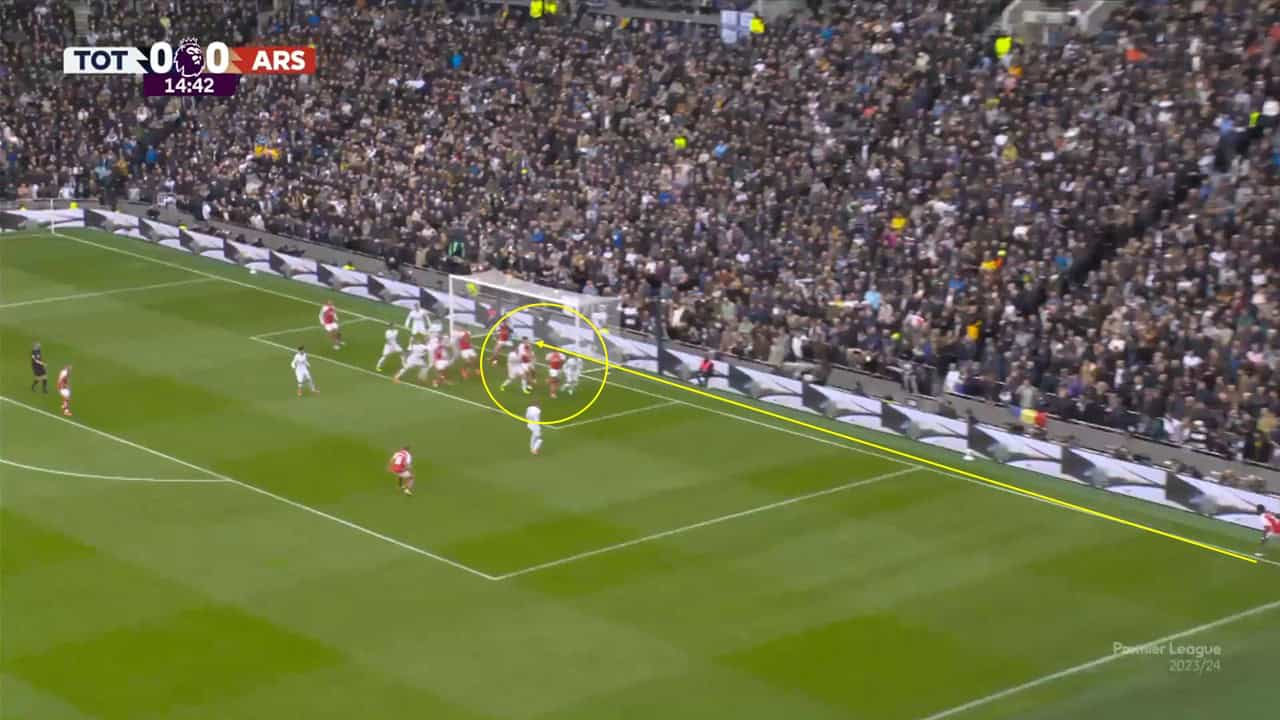
Here, Bakayo Saka delivers a deadly inswinging corner with a significant amount of pace on it.
The ball is played into the front post area, where many of his teammates are waiting.
The combination of the crowded area and pace of the delivery leads to one of the defending players heading the ball into his own net.
Using Your Side’s Strengths
One natural strength when challenging for set pieces is height.
Arsenal’s starting line-up against Atalanta saw their 10 outfield players have an average height of 6ft, while Leeds’ game against Burnley saw them line up with an average height of 5 ‘9.
Arsenal have some real aerial threats in the box.
Gabriel had a percentile rank of 92 for goals scored by a centre-back in the 2023/24 Premier League season.
Forward Kai Havertz also demonstrated his ability in the air, with a percentile rank of 82 for aerial duels won compared with centre-forwards.
Yet it’s how Arsenal use the strengths of their individual players to have the success that they have from corners.
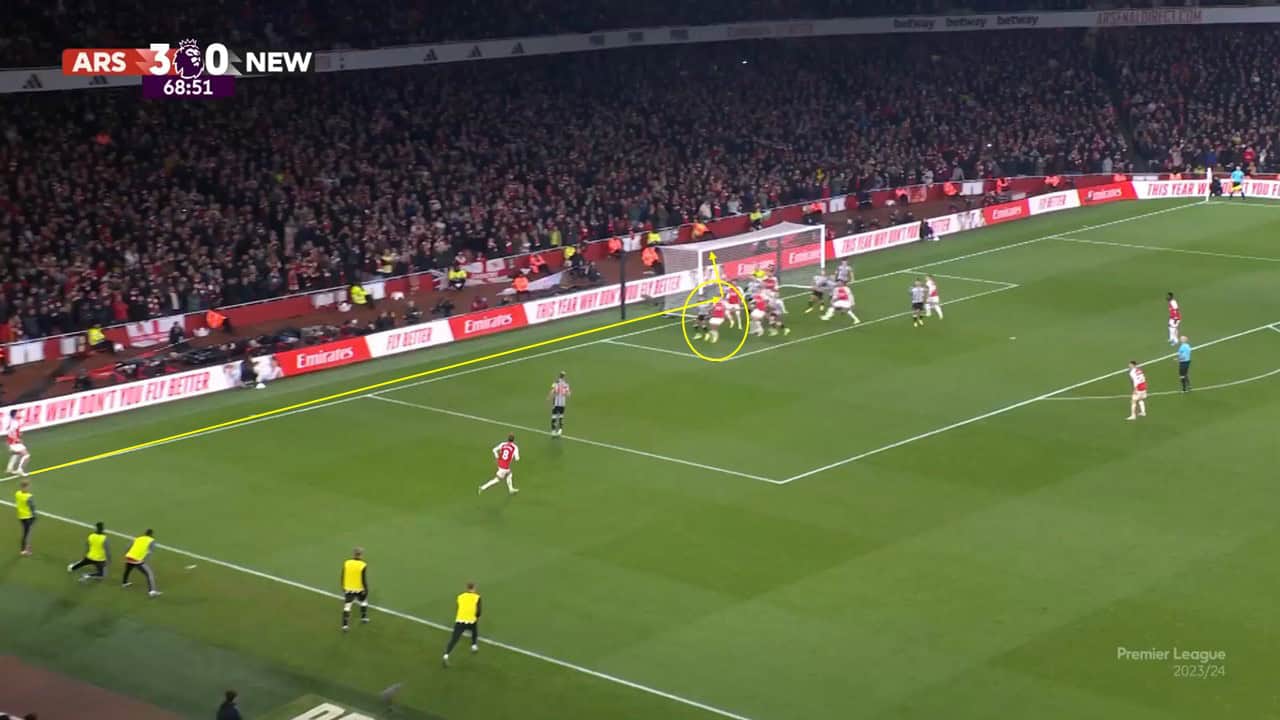
In this situation, Declan Rice played a perfect inswinging corner to the front post area.
Arsenal’s 6’2 Polish defender Jakub Kiwior is attacking the ball.
He can direct his header into the back of the net.
Despite Leeds lacking in height, the way they use their aerially dominant players has been a major issue.
Pascal Struijk scored five goals in all competitions last year from centre-back.
Joe Roden also provides an aerial threat, standing at 193 cm and having a percentile rank of 74 for a percentage of aerial duels won.
However, Leeds has used the wrong players in the areas where they are most likely to be successful.
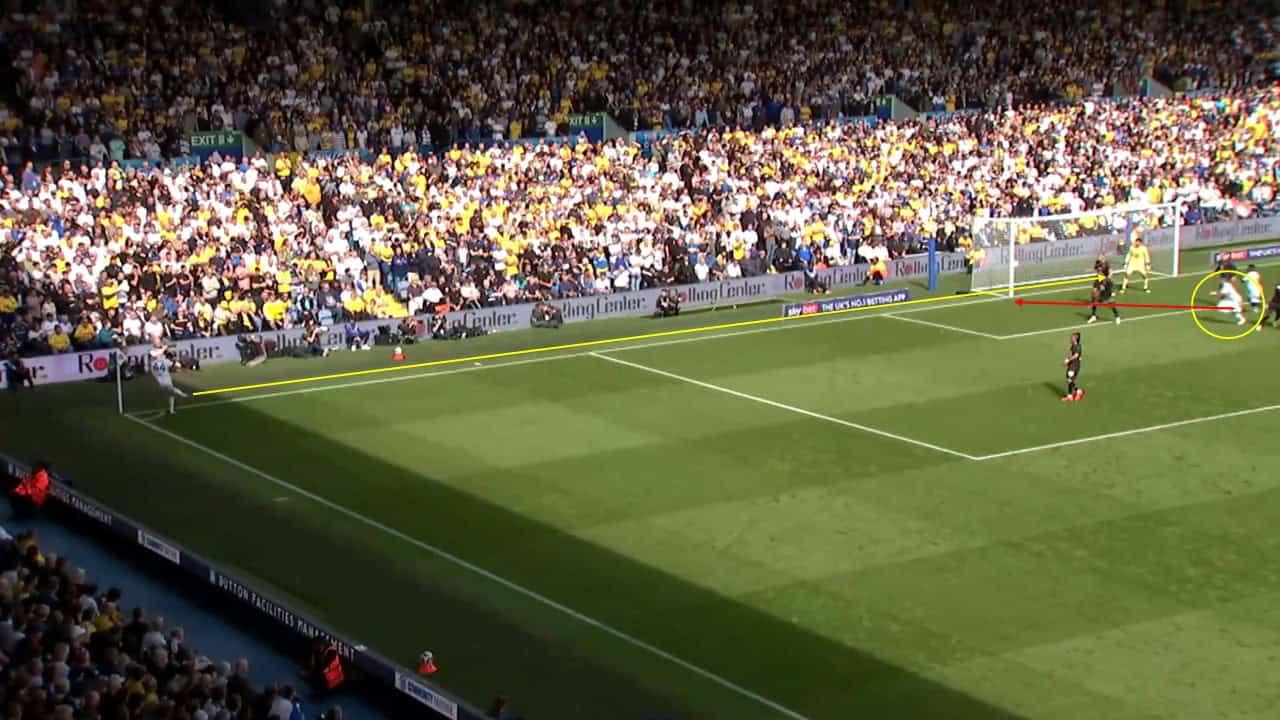
Here, a fantastic delivery has been put into the near post.
Mateo Joseph has been tasked with making the first contact in this area.
Despite Joseph having an eye for goal, he lacks the ability to win balls in the air, having a percentile rank of 13 for aerial duels won when compared with forwards.
Joseph is unable to win the ball, and it’s easily cleared.
Strength In Numbers
Arsenal undoubtedly have individuals who provide a real aerial threat.
Yet how do they work as a collective to ensure that they have the greatest chance of success when scoring from corners?
One of their greatest weapons is clustered attacks.
Arsenal will have several of their most aerially dominant defenders bomb towards a certain area in the box to increase their chance of getting first contact on the ball.
In the 2023 Women’s World Cup, it was discovered that there was a 46% chance of an attempt on goal when three players attacked the front post.
Arsenal has used this tactic repeatedly, gaining not only a qualitative but also a quantitative advantage.
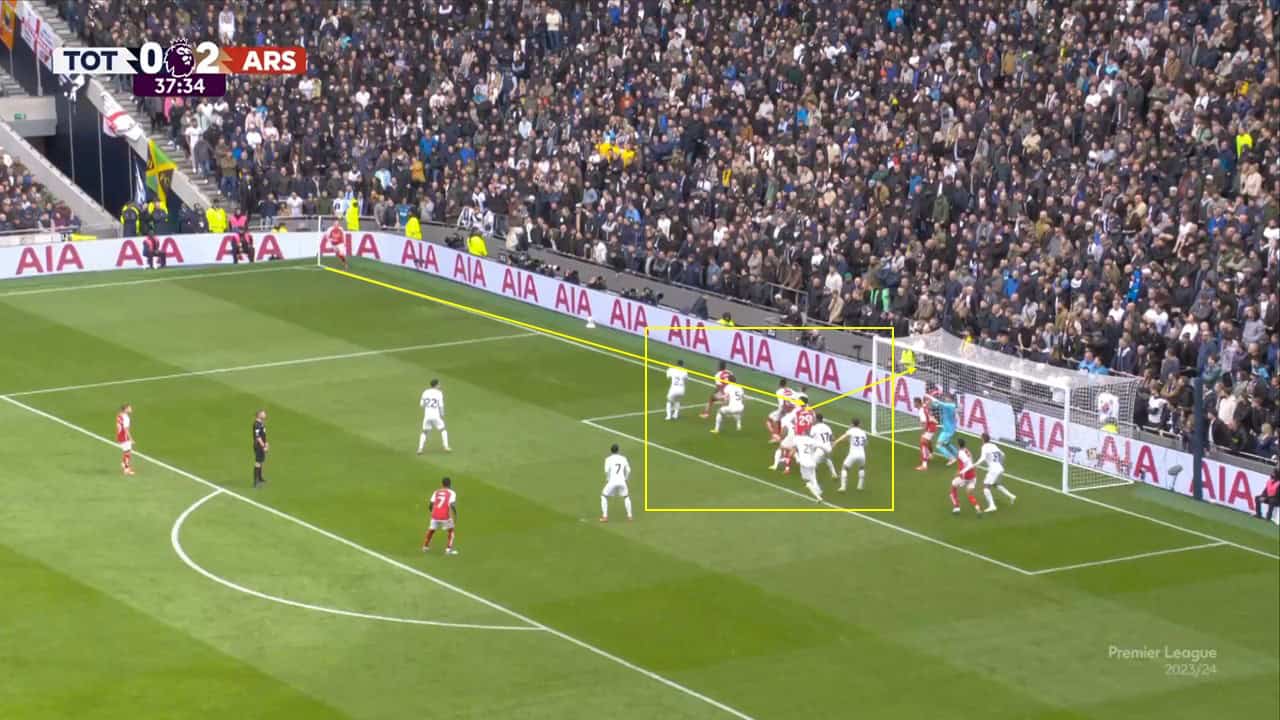
As Declan Rice delivers another ball into the front post, Arsenal have three of their most aerially competent players charge towards that area.
The ball goes over the head of Arsenal’s first couple of players attacking the near post, yet it falls directly onto Kai Havertz’s head, who is able to put it straight into the net.
Leeds have often opted for a different approach.
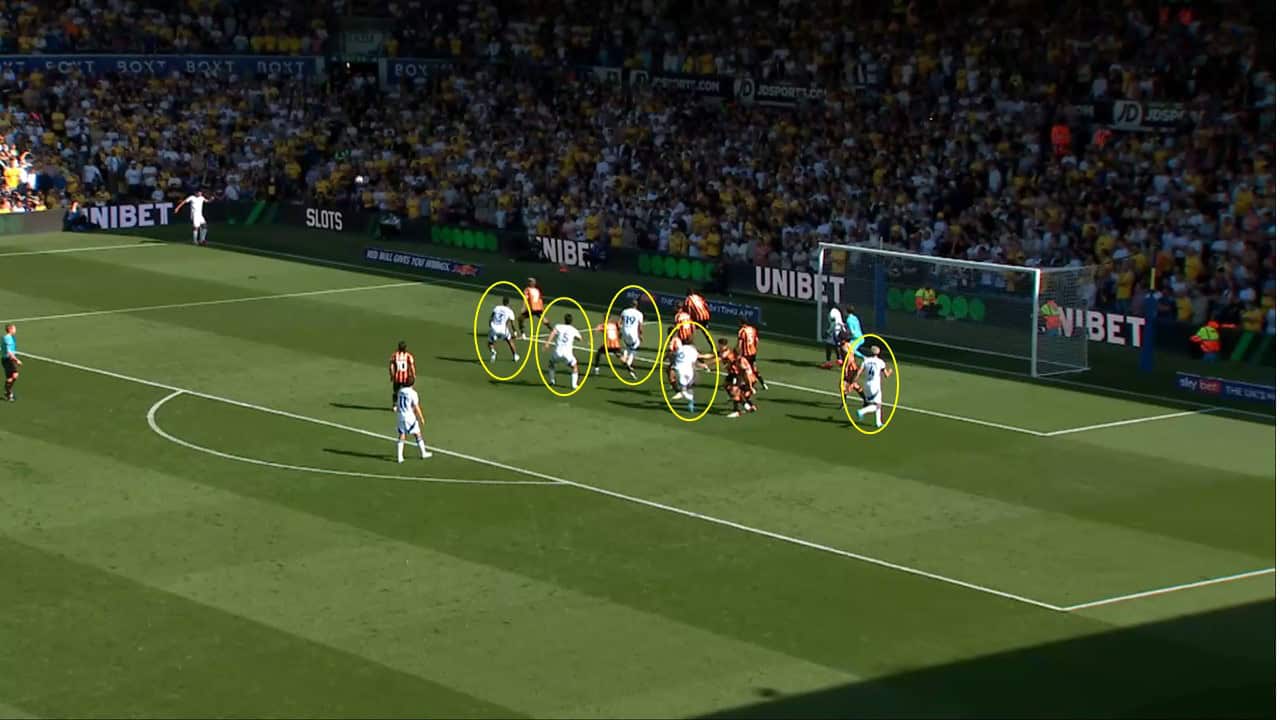
Here, we see five of Leeds’ tallest players all separating and heading to attack certain areas.
Despite this making logical sense, they are relying on qualitative superiority, which is what they lack, as opposed to using numerical superiority, which could give them a better opportunity to make that first contact.
Not only do Arsenal use those who have the ability to win headers at corners.
Yet, each player at the corner has a distinct role to play in making it a success.
Ben White’s role of marking the goalkeeper has been well-publicised, yet the hidden roles of an array of players haven’t gotten the praise they deserve.
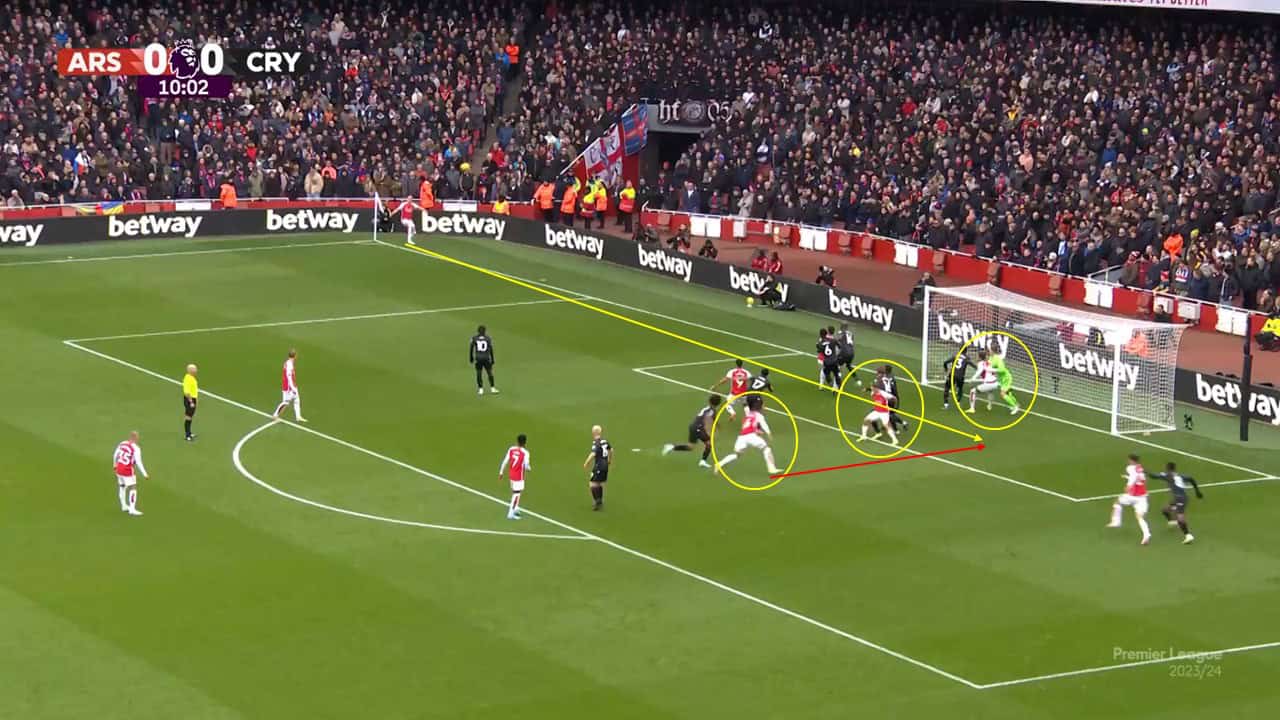
In this situation, Declan Rice is delivering another corner.
Arsenal changed up the area they delivered the ball into, aiming for the six-yard box.
Gabriel is the target.
To give him the best chance of getting a free header, Ben White is again blocking the goalkeeper.
Yet more importantly, Leandro Trossard has blocked the opposition’s two zonal defenders, who are placed on the edge of the six-yard box in an attempt to clear any balls in that area.
This leaves Gabriel with the easy task of heading the ball into the net unchallenged.
This has been Leeds’ downfall.
Despite also trying certain tactics, such as a clustered attack, they have failed to use the roles of the surrounding players to gain the maximal chance of success.
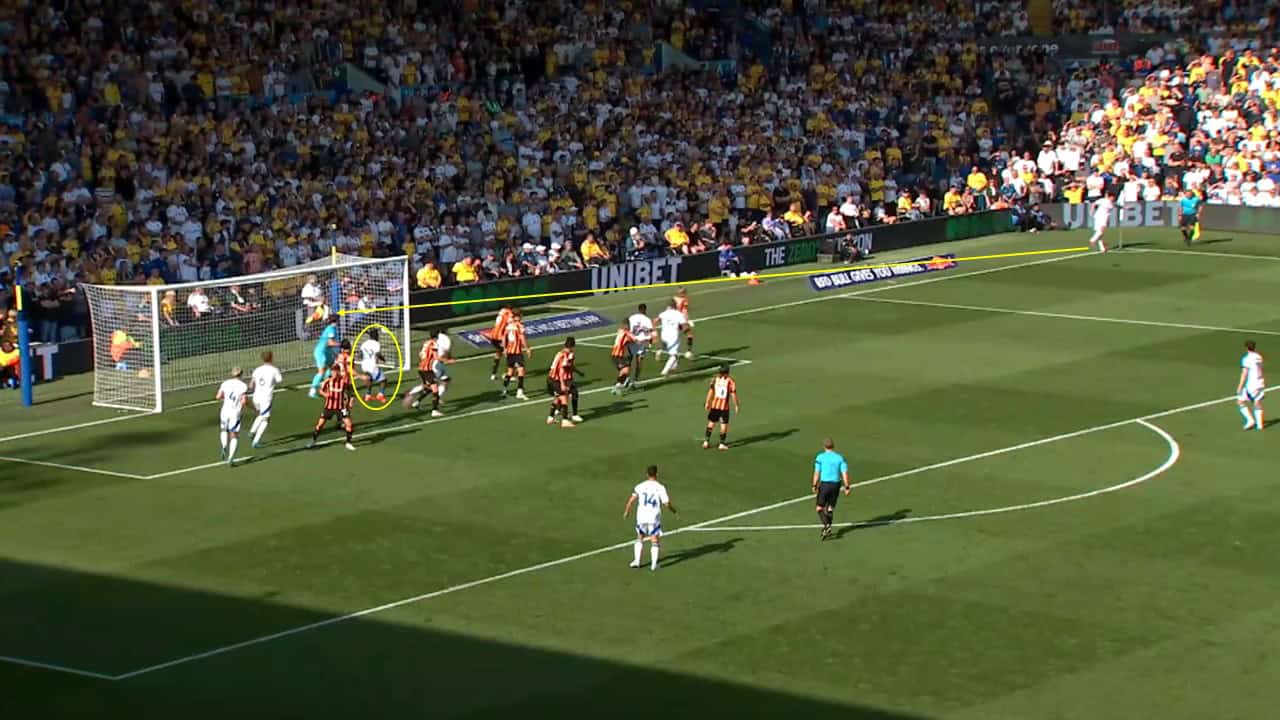
Here, Wilfred Gnonto has been tasked with blocking the goalkeeper as the ball has been played in.
The ball is played at a considerable pace in the 6-yard box.
Although Gnonto is far from the tallest player, his lack of effort to block the goalkeeper makes it easy for his opponent to come out and cleanly punch the ball away.
Conclusion
This article demonstrates that Arsenal have a significant weapon for use in set pieces.
The combination of a top-class delivery in the right area, aerially competent players, and well-choreographed routines has been a key factor in their rise over the past couple of seasons.
Comparatively, Leeds have failed to use corners effectively under Daniel Farke.
They may not have the playing squad that Arsenal has at their disposal, but they are failing to use the tools they have to get the most out of corners.
Leeds could be failing in an area that will detrimentally hurt their chances of promotion this season.





Comments